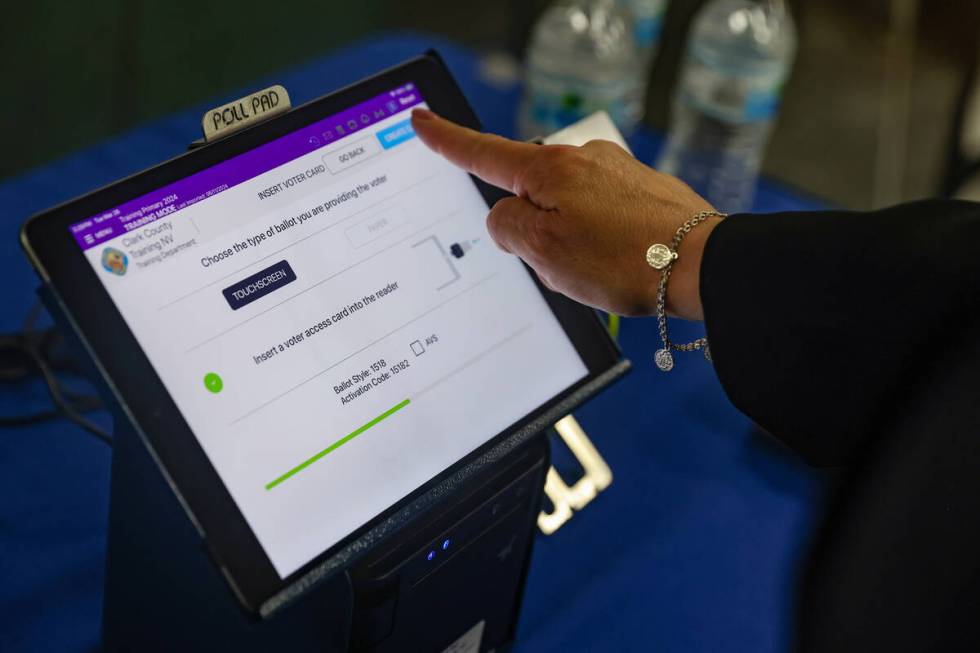What signatures do county officials check when verifying your mail ballot?

A Las Vegas Review-Journal reader asked about the signature verification process counties follow when it receives a completed mail ballot.
Here’s what we found.
The Clark County Election Department’s Agilis machine — one of the many machines that are part of the voting and tabulation process — takes a digital image of the signature on the mail ballot envelope and compares it with the signature on the voter’s registration application in accordance with Nevada’s laws. If the Agilis machine can’t match the signatures, the mail ballot envelope will be reviewed manually.
A bipartisan team compares the signature on the envelope with the last signature of the voter on record, and if that doesn’t suffice, the team reviews all of the voter’s available signatures on file, according to Clark County Registrar of Voters Lorena Portillo.
If at least two employees in the clerk’s or registrar’s office believe there is a reasonable question as to whether the signature used for the mail ballot envelope matches that of the voter, the clerk will contact the voter and ask them to confirm, according to Nevada law. If the signature can’t be verified, then it is challenged and must go through a curing process to be counted. Voters have until 5 p.m. on the sixth day after Election Day to provide a signature confirmation. If that doesn’t work, the ballot is not counted.
In the 2024 primary, signatures on 4,832 mail ballots had to be cured statewide, which represented 2.8 percent of ballots returned. Of those, 2,220 were successfully cured by the voter and counted.
The reader also wondered how often mail ballots are rejected in Nevada compared to other states.
Ballots can be rejected for many more reasons than just mismatched signatures that can’t be resolved. They can also be rejected for being mailed in the wrong envelope, for envelopes being mailed in without a ballot and other reasons.
During the 2024 presidential preference primary, 3,897 mail ballots were rejected due to mistakes a wrong envelope or a missing ballot. Those rejections represented 2.2 percent of ballots returned, according to data from the Nevada Secretary of State’s website. In the 2022 general election, 8,036 mail ballots were rejected, which represented 1.6 percent of the total ballots returned.
To compare with other states that also allow all elections to be conducted by mail, California’s April 2024 presidential primary saw 108,982 mail ballots rejected, which represented 1.56 percent of ballots cast.
Contact Jessica Hill at jehill@reviewjournal.com. Follow @jess_hillyeah on X.